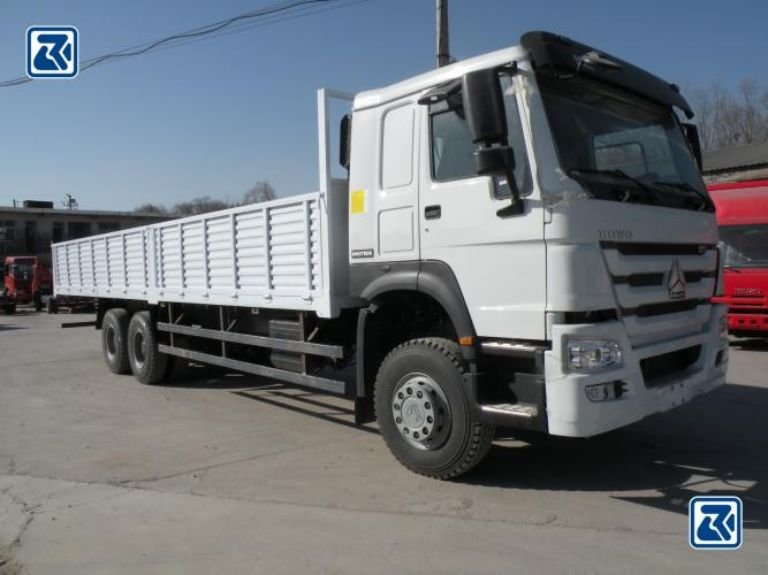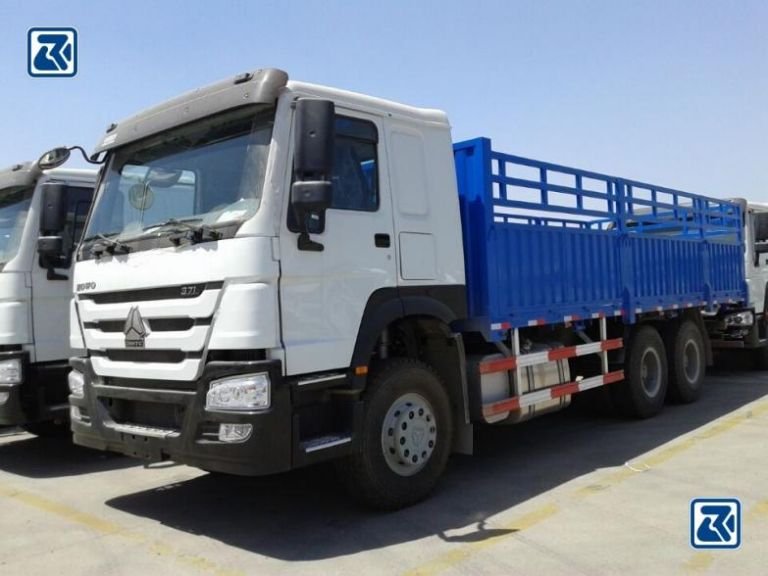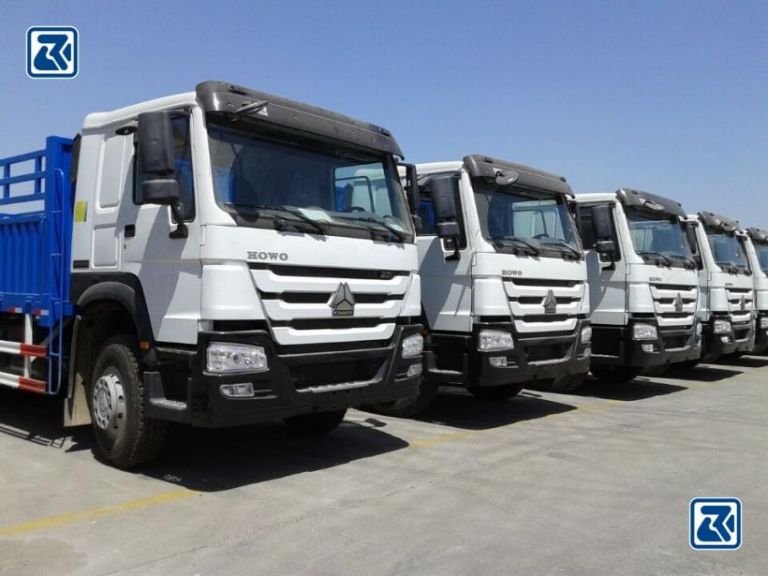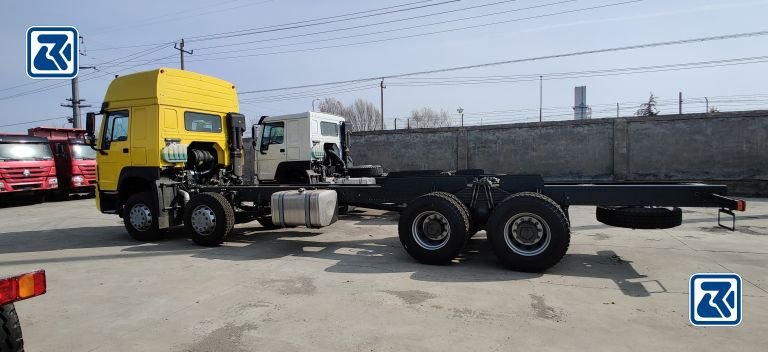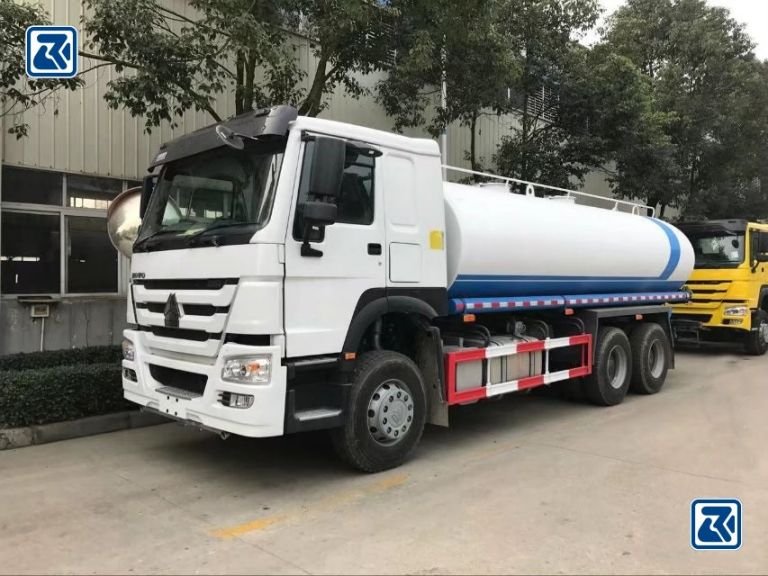HOWO Special Truck Ltd. specializes in the sale heavy-duty trucks. Its range of cargo trucks is popular for its excellent performance and reliability. The company is committed to providing efficient vehicles covering a wide range of models to meet the needs of different customers.
In the modern logistics industry, it is important to understand the fuel consumption of HOWO cargo trucks. It helps save on costs and improves how efficiently the trucks run. Higher fuel efficiency not only reduces transportation costs, but also lowers carbon emissions, which is particularly important for long-distance transportation and the sustainable development of logistics companies.
Table of Contents
fuel efficiency in HOWO cargo trucks
HOWO cargo trucks are known for their excellent fuel efficiency. Fuel consumption varies between truck models, usually between 6 and 10 liters per kilometer. Fuel efficiency varies depending on the model, load and driving conditions.
Lighter models usually have better fuel economy due to their design. This makes them more efficient for specific transportation tasks.
Many factors affect the amount of fuel a truck uses, including engine power, truck weight and load capacity.
A more powerful engine is good for quick acceleration, but may use more fuel when the truck is not heavily loaded.
Heavier trucks need to overcome more weight and air resistance, so they require more fuel to drive.
The load is also important; if the truck is overloaded, the engine has to work harder, which reduces fuel efficiency.
Choosing the right HOWO truck model and managing the load properly is the key to saving fuel.
Fuel consumption of different HOWO truck models
The fuel consumption of HOWO trucks varies from model to model and is closely related to the specific transportation task.
HOWO 4×2 light truck
The HOWO 4×2 light truck consumes 10 to 15 liters of fuel per 100 kilometers.
This model is ideally suited for transporting light goods such as parcels and construction materials in the city.
Its low fuel consumption and ease of handling make it ideal for small-scale transportation tasks.
HOWO 6×4 medium duty truck
The HOWO 6×4 medium-duty truck consumes 20 to 25 liters of fuel per 100 kilometers.
It can carry heavier loads and is suitable for regional transport and medium-sized deliveries, like furniture and machinery.
The truck excels in logistics between towns and cities.
HOWO 8×4 Heavy Duty Truck
The HOWO 8×4 Heavy Duty Truck has a high fuel consumption of 30 to 40 liters per 100 km.
This truck is used for heavy cargo and long-distance trips, such as transporting ore and construction materials.
The HOWO truck uses a lot of fuel, but it can carry heavy loads and is very stable, which makes it important for heavy-duty transport.
The differences in fuel use between HOWO light, medium, and heavy trucks show their specific purposes. Picking the right model helps balance efficiency and cost, allowing companies to save money and increase profits.
Get a tailored quote today and elevate your transport efficiency.
Factors affecting fuel consumption
Many things affect how much fuel HOWO trucks use, like the load they carry, how they are driven, the road conditions, and the speed.
Vehicle load
Reasonable distribution of loads can help improve fuel efficiency. It’s important to avoid overloading, as it increases the engine’s work and significantly raises fuel use.
When loading cargo, placing heavy items lower on the truck helps improve stability and fuel efficiency.
Driving habits
Driving habits also play a key role. Smooth driving with steady acceleration and braking helps reduce fuel consumption. Avoid sudden stops and quick accelerations, as these cause the engine to burn more fuel quickly.
On the highway, maintaining a steady speed can help save fuel by avoiding frequent gear changes and harsh braking.
Road conditions and speed
In congested urban areas, slow driving and frequent stops increase fuel consumption.
On open highways, fuel efficiency is often higher.
Drivers should adjust their driving style to the road conditions. For example, driving slowly
Proper load management, good driving habits and adapting driving style to road conditions can significantly improve the fuel efficiency of HOWO trucks.
Tips to Improve HOWO Truck Fuel Efficiency
To improve the fuel efficiency of your HOWO truck, refer to the following tips:
Regular maintenance: Keep the engine, tire pressure and air filter in good condition. Regular oil and filter changes help the engine run efficiently. Proper tire pressure reduces rolling resistance, which improves fuel efficiency.
Use efficient fuel: Choose the right fuel for your HOWO truck to ensure it burns efficiently. You can also try using fuel additives, These help fuel burn better and reduce carbon buildup, which improves fuel economy.
Optimize routes: Use GPS and route planning software to choose the shortest, most fuel-efficient route. This shortens the trip, avoids traffic and stops, and helps save more fuel.
Through these methods, you can effectively improve the fuel efficiency of HOWO trucks and reduce operating costs.
Get a tailored quote today and elevate your transport efficiency.
Fuel efficiency and long-term costs
Improving fuel efficiency not only reduces transportation costs, but also leads to greater economic benefits over time.
In the logistics industry, fuel costs often take up a large portion of expenses.
Choosing fuel-efficient vehicles can significantly reduce these costs and lower overall operating expenses.
Better fuel efficiency also helps lower greenhouse gas emissions.
When purchasing a truck, it’s a good idea to check the fuel economy ratings of different models and choose one that performs well.
When balancing the initial cost of a vehicle with its gas mileage, it’s important to consider the entire lifecycle.
While some fuel-efficient models may cost more upfront, they can save more in the long run by reducing fuel expenses.
So, you should carefully compare the yearly fuel savings with the higher purchase price. Choose the model with the lowest total cost to get the best value for your investment.
Conclusion
In the logistics industry, keeping transport costs low is a key goal for businesses. The fuel use of HOWO trucks directly impacts costs, so it’s important to understand and improve fuel efficiency. Improving fuel efficiency helps to reduce costs and improve transport efficiency, thus giving companies an advantage in the market.
Improving fuel efficiency also reduces carbon emissions, protects the environment and enhances corporate image. When choosing a truck, it’s smart to compare fuel efficiency across models to save on daily costs and run more efficiently.
We advise you to consider their own needs, including truck features, fuel usage and maintenance costs, to pick the right HOWO truck. For further advice, contact HOWO Special Truck Ltd. We can provide more detailed information to help you make the best choice.

